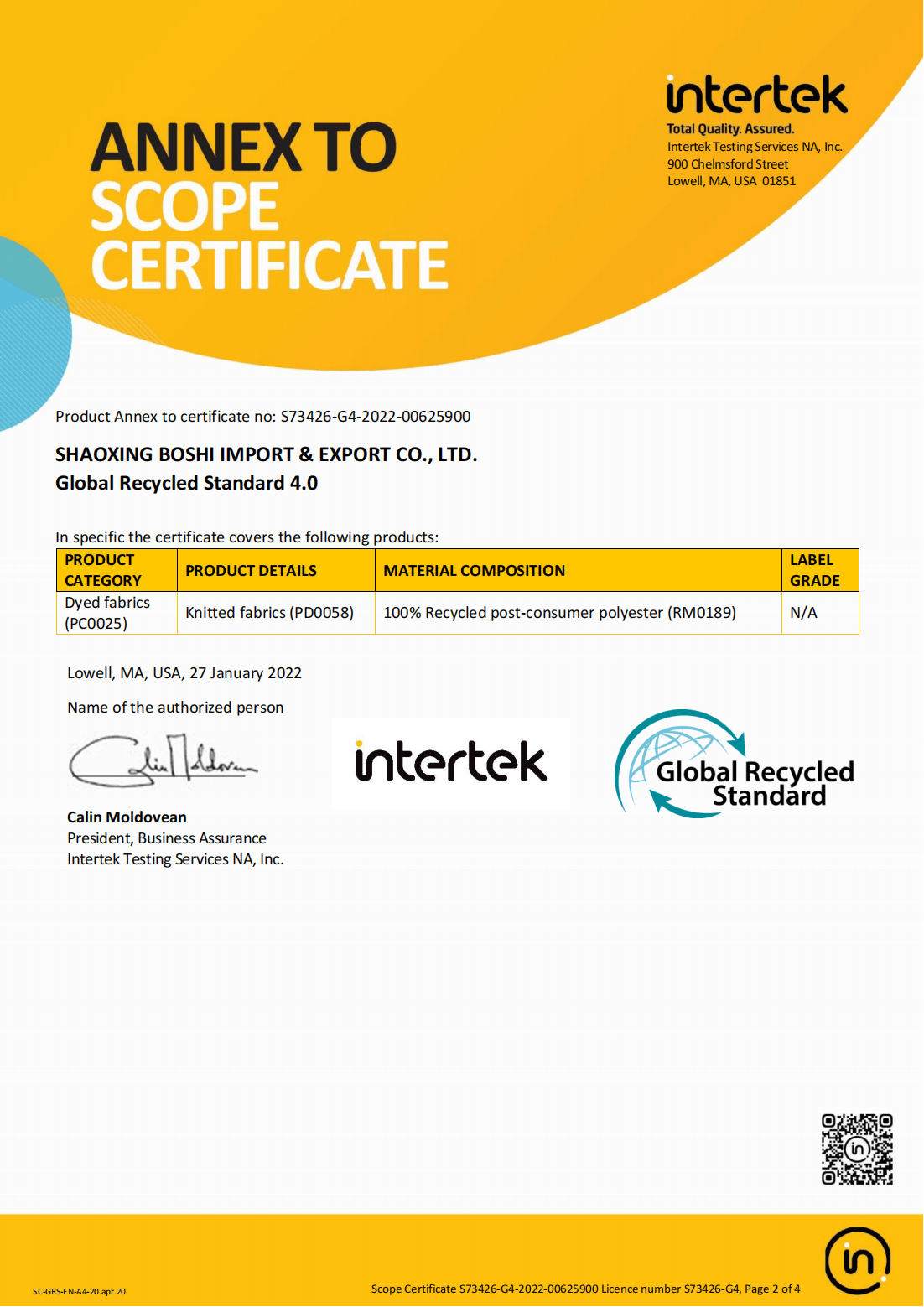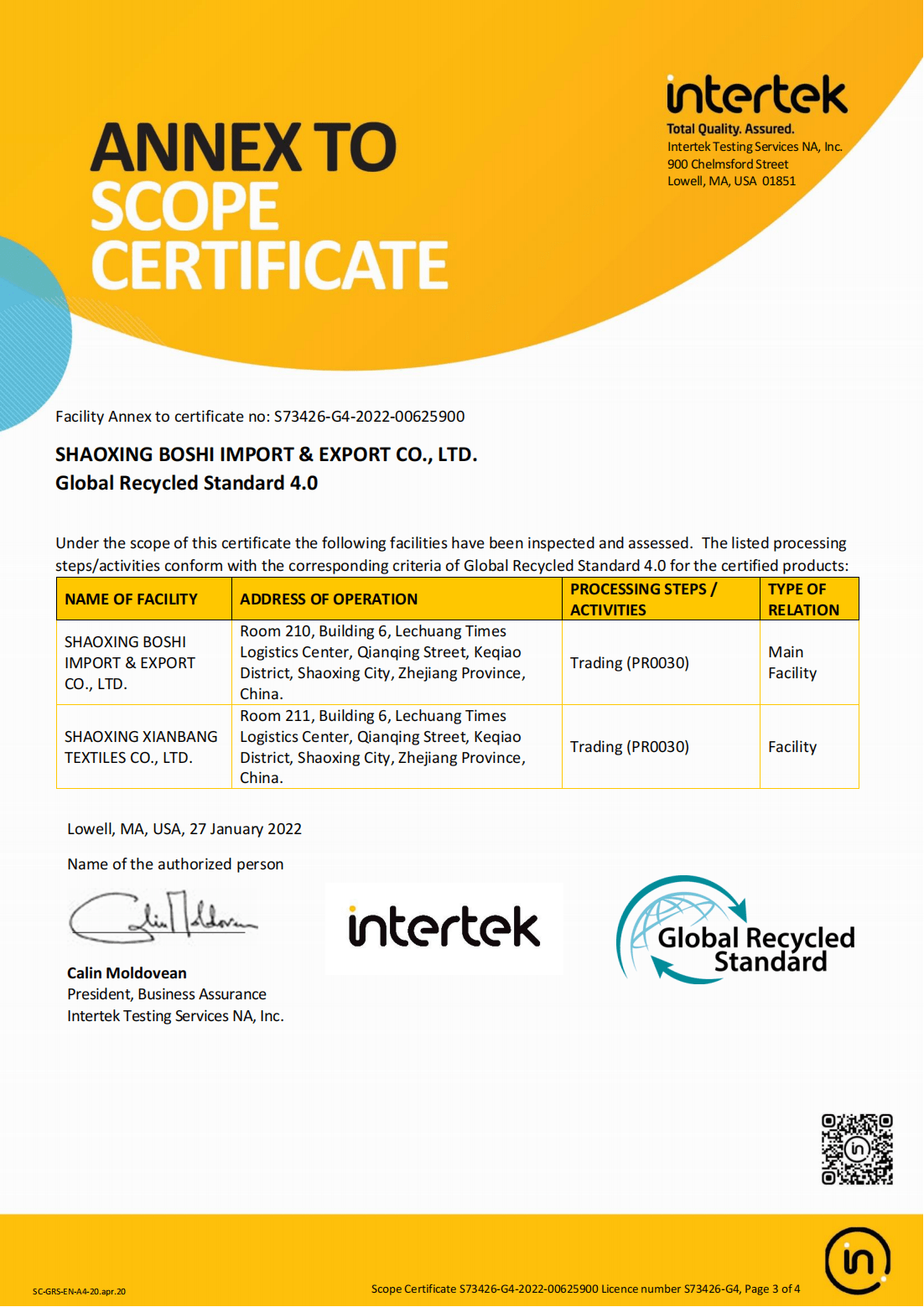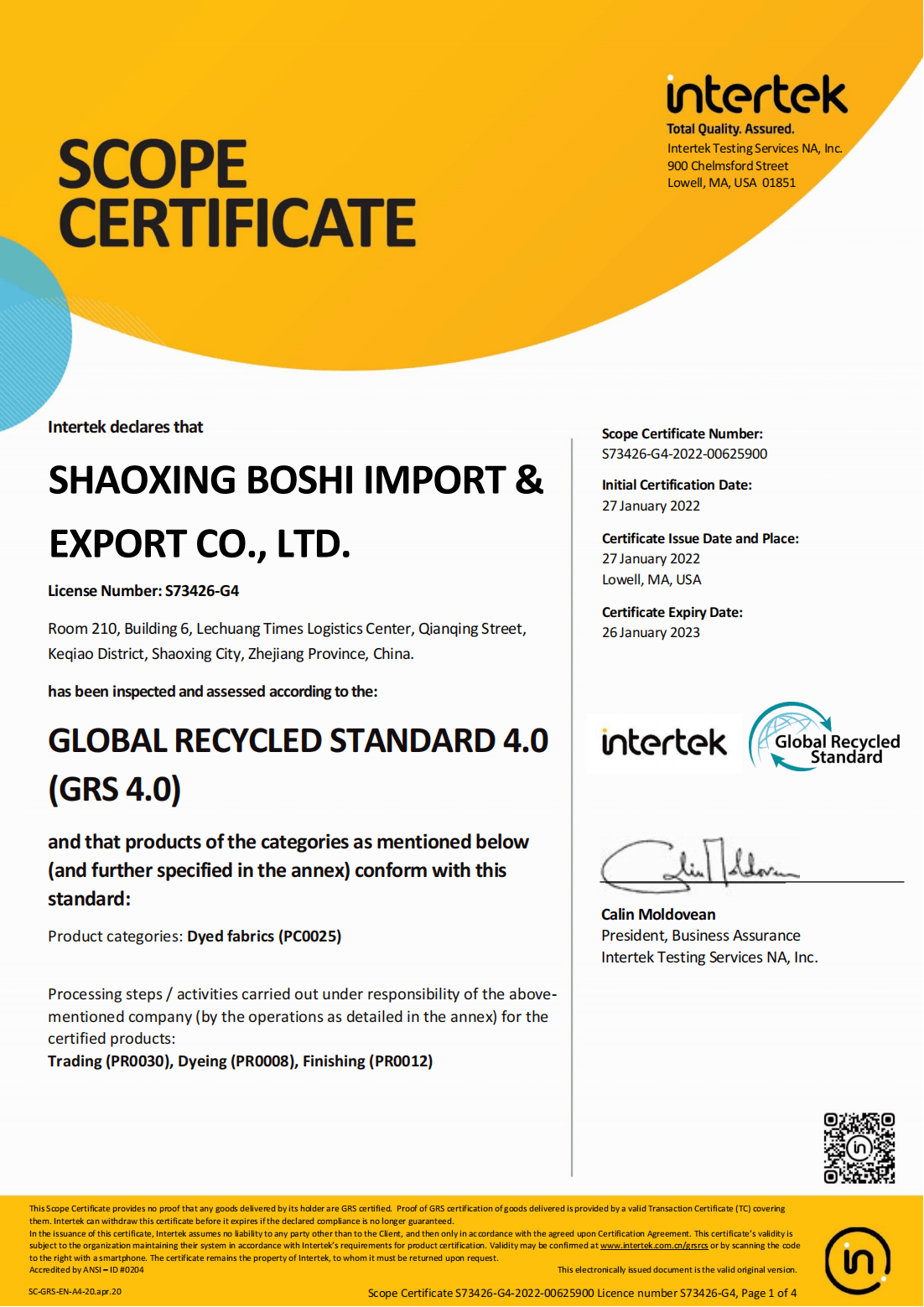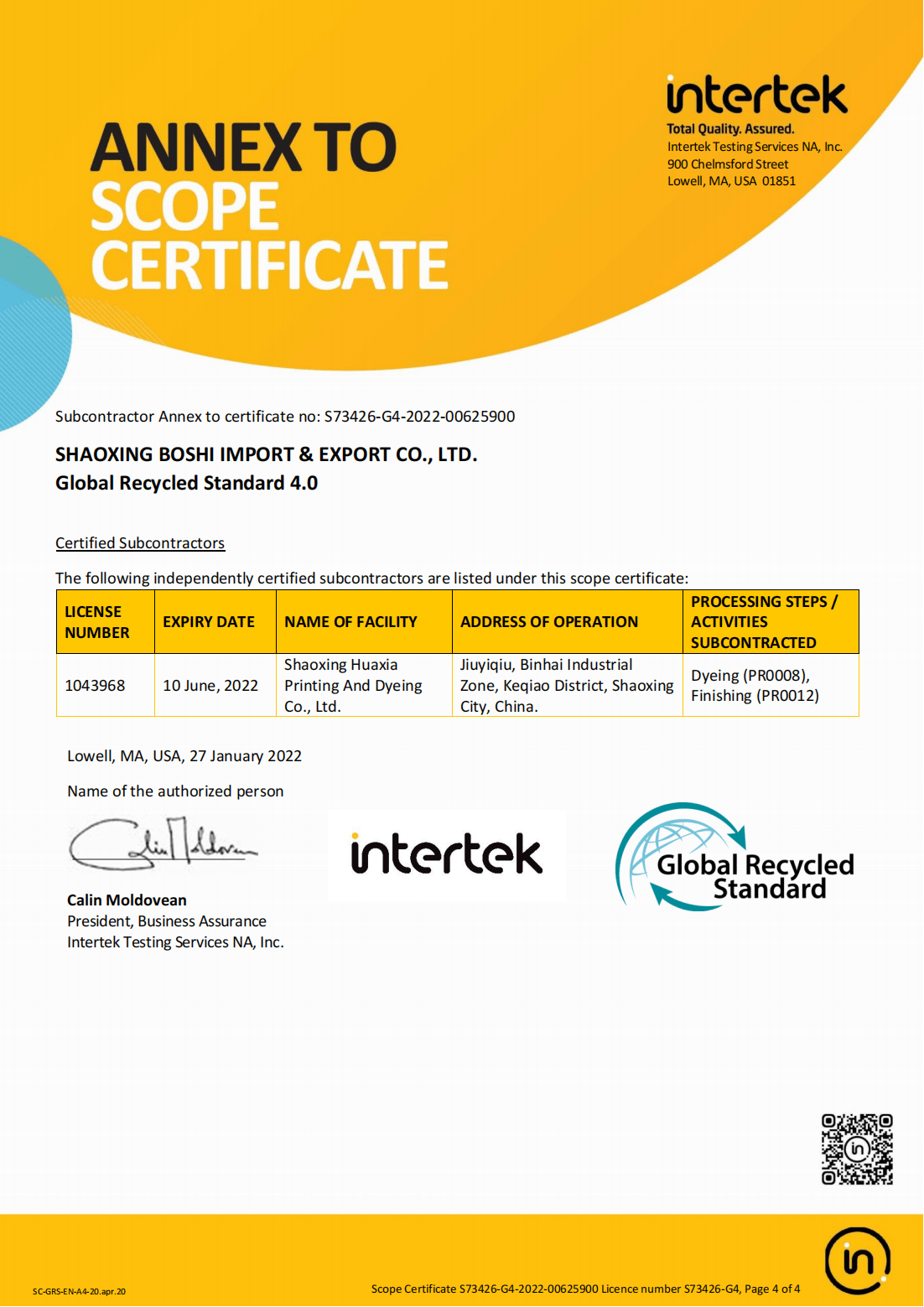Fleece Fabric
Why Choose Us?
Wide Product Range
BOSSFABRIC is a professional check T/R fabric supplier from China who can custom the fabric as per customer's demand. In the past few years, we developed more than 2000 different check patterns, lots of designers choose from them for their stylist purpose.
Customizable Services
We can custom check woolen fabric in anycomposition (any percentage RAYON, any weight and any patten, also can be in any base like as buffalo check, houndstooth check,mono-check, large check and windowpane check so on.....
Rich Experience
Based on our rich experience in the textile field, we can always find the best way to meet your target price or special finishing.
Wide Market
Our Costomers Are Located in Europe, Usa, Canad, Australia and South Asian Countries Such as Vietnam, Cambodia, India, Ari Lanka and Indonesia.
What is Fleece Fabric?
Fleece fabric is popular for outdoor and cold-weather clothes. It’s comfy because it feels soft and plush. Fleece can come in different textures, like smooth or “furry,” which changes how it looks and works. The texture can also affect how warm and dry it keeps you. This is why fleece is great for staying cozy in the cold. Fleece can be light or heavy, depending on what it’s used for. Fleece fabric weight plays a crucial role in determining its suitability for different activities and weather conditions.
-
Fake Wool Winter FabricProduct Description In recent years, an air layer fabric has become popular in the market. This fabric is all polyester woven fleece. This fabric has a thick appearance, good rebound feel, light...read more
-
Woolen Poly Knit FabricProduct Description In fact, we often see brushed cloth in our life. Brushed cloth is a cotton fabric that has a rich and hairy appearance on the surface of the cotton cloth after being brushed....read more
-
Vintage Woolen Fabric Warm KeepingThis ultra soft solid fleece is medium weight and perfect for creating jackets, vests, scarves, mittens and blankets.read more
-
Faux wool fabric keep warmingUses for autumn and winter coats, suits, skirts, hats, handmade DIY, etc.read more
-
Thickened Double Sided Brushed FabricPlaid Woolen Fabric, Woolen Fabric, Woolen Coat Fabric, Vintage Woolen Fabric, Suit for coats, trench coats, vests, pants, etc.read more
-
Suit For Coats And Tops in Autumn And WinterThe fabric has small grid, it is warm, thick, soft, comfortable, skin-friendly, not easy to fade, anti-pilling, crisp, fashion.read more
-
Polar Fleece Soft, Anti-Pill Double Brushed Solid FleeceThis ultra soft solid fleece is medium weight and perfect for creating jackets, vests, scarves, mittens and blankets. Double Brushed Solid Fleece Polar Fleece Solidread more
-
Double Brushed Polyester KnitThe fabric is warm, comfortable, soft, skin-friendly, not easy to fade, anti-pilling, crisp. Uses for autumn and winter coats, suits, skirts, hats, handmade DIY, etc.read more
-
Double Brushed Print FleeceWe always adhere to the selection of top fabrics, using high-tech production technology, to ensure the product "classic" quality.This one side brushed is our classic workread more
-
Longfeng Ni Fashion Woolen FabricAbout this item Polartec fleece is heavyweight and extra soft on both sides. This performance fleece is anti-pill breathable and insulating fabric that repels water and has 25% stretch across the...read more
-
Tartan Plaid Fleece FabricFleece fabrics refer to fabrics made by fleece processing. Of course, there are several types of fleece processes.read more
-
Checker Fleece FabricUnder the influence of the cold snap, the temperature trend is sluggish. To meet people's need to keep out the cold and wind, many businesses have launched fleece clothing products.read more
Advantages of Fleece Fabric
Wear Resistance
The fleece fabric meaning is hidden in its usability. This material, made from the finest polyester fibers, is great for colder temperature. Due to its material, fleece jackets also prove to be effectively water-resistant. Not that you would want to wear your comfy jacket in the heavy rains, but it is very effective in sliding off the water caused by low temperatures, which keeps the cold from getting to you. This feature is extremely important if you love the mountains and are planning for a hike or two. Fleece jackets like this stretch fleece long sleeve full zip hoodie will make for a great outer or even inner layer in icy cold treks or winter campfire outings. It can take a little drizzle and will make sure that you are safe and comfortably dry and warm inside!
Dries Quickly
Due to its material origin, fleece fabric tends to shed moisture easily. While materials like wool, cotton, and corduroy take a long time to dry, the fleece wins all the prizes. Its micro fibers made of polyesters shed the water out quickly and easily, and you can wear them almost every day. For the adventurous and the wild ones, fleece offers effective solutions in geographical landscapes with varying temperatures and weather. Comfy clothes made with fleece like this micro fleece set for men or a fleece for women that will keep you warm, fashionable, and dry. These outerwear options not only dry quickly but also can be paired easily with thousands of bottom wear options in your wardrobe.
Cost Effective
As the fleece meaning describes, fleece fabric is a human-made synthetic material. Apart from being extremely stylish and ‘in’ right now, it is also very cost-effective. While wool and fur can cost a lot to purchase, maintain, and repair if needed, fleece is highly approachable and low maintenance. Fleece clothing items like this women’s knitted fleece high neck long sleeve tunic or men’s fluffy yarn fleece long sleeve pullover shirt will keep you warm and comfy without burning a hole in your pocket.
Increased Comfort
As we saw in the fleece definition, fleece fabric is an extremely warm yet lightweight winter wear option. The knitting of this material is specialized in delivering heavy-duty warmth without feeling the weight of it. Unlike other winter wear materials like wool or fur, wearing a fleece jacket or inner layers like a shirt or pullover will not feel heavy or stuffy. The comfort of fleece lies in its breathable simplicity. Options like this women’s windproof fluffy yarn fleece full zip hoodie or men’s wool blend fleece jacket will provide you with ultimate protection as well as comfort without compromising on style or mobility.
Easy to Clean
Unlike the traditional winter jackets and sweaters, which need to be cleaned and dry cleaned and dusted and washed and softened and processed before every winter, fleece fabric is a material that is extremely easy to clean and use. Its lightweight and microfibers make the task of cleaning it much easier than any other materials. Due to its quick-drying and water-resisting qualities, fleece is as good as a pick and wear option in winter wears. Low maintenance wear like this men’s fleece long sleeve full zip jacket or women’s smooth yarn fleece collarless jacket can make your life easy and stylish at the same time.
1. Polar Fleece
The most popular form of fleece fabric is polar fleece. This is most likely because they are cheaper, softer, and thicker than microfleece. It has excellent insulating properties, works hard at retaining body heat, and prevents moisture from quickly evaporating. It's ideal for blankets, vests, and other winter garments. This form of fleece is available in a variety of colors and is made entirely of polyester.
2. Micro Fleece
This form of fleece, also known as Microfiber fleece, is lightweight and comfortable to the touch. It is the thinnest fleece fabric and is commonly used to line waterproof garments, children's garments, sportswear, and nightwear. Its plush texture and synthetic fibers make it a healthy option for sewing cozy, long-lasting, and easy-to-care-for garments. Fleece is considered micro fleece if it is less than 200 grams per square meter.
3. Polyester Fleece
This fleece is double-sided with a pile on both sides; it is soft, and like the polar fleece, it does not pill. Instead, its surface is napped and so creates a fluffy texture. With its high insulation properties, it is mostly used outdoors.
4. Cotton And Rayon Fleece
These types of fleece have either cotton or rayon incorporated in them. They are soft and smooth and very breathable.
5. Hemp Fleece
This is a natural fleece that is fluffy and contains cotton. It has a deep pile on one side and is smooth on the other side.
6. Merino Wool Fleece
Yet another natural fabric, it is made from fibers from merino sheep’s wool. It is a very fluffy and warming fleece.
7. Sherpa Fleece Fabric
This fabric is a thicker fleece with a textured and raised pile. The pile is longer than many of the other types of fleece above. It often has a slight stretch and makes warm winter jackets, coats, and blankets. Sherpa fleece can be made from cotton, wool, polyester or acrylic, or a blend of these.
8. Double Sided Fleece
Double-sided fleece is a type of fleece fabric that has napped, push surfaces on both sides. It is exceptionally warm and soft since is fluffy on both sides, unlike most other fleeces, which have a nap on just the outside.
9. Bamboo Fleece
Bamboo fleece is an eco-friendly fabric made from bamboo pulp. Since it is made from a natural fiber, it is soft, breathable and highly absorbent. It is great for sensitive skin and resists odor.
10. French Terry Fleece
French terry fleece is a knit fabric that has a looped underside and smooth exterior. It is lighter than many other types of fleece making it ideal for sportswear.
11. Plush Fleece
Plush fleece is ultra soft with a deep pile. It is often compared to velvet and is especially warm. Use it for blankets and winter clothing.

Fleece is a fabric made from polyester. It is very light, strong, and sturdy. Fibers are knitted together to make one side of the fabric soft and fluffy while the other side is smoother. The polyester fibers of a fleece fabric are melted down and extruded through a spinneret to create long, thin strands that are then woven or knitted together to form a dense, fluffy fabric with insulating properties. Manufacturers of fleece have the option to incorporate other synthetic and natural fibers, such as nylon, acrylic, and cotton, into the production process of fleece rather than solely depending on polyester as the main material.
Application of Fleece Fabric
Apparel and Accessories
Fleece fabric is ubiquitous in the world of fashion. It's used to make cozy jackets and vests, sweatshirts, and hoodies. You'll find it in pajamas and loungewear, hats, gloves, and scarves for its ability to provide warmth without adding excess weight.
Blankets and Bedding
At home, fleece shows up in the form of soft, warm blankets that are perfect for snuggling under on a cold day. It's also found in throws, comforters, and even fitted sheets, providing a warm, cozy sleep environment during cold nights.
Outdoor Gear
Outdoor enthusiasts value fleece fabric for its insulating and quick-drying properties. It's commonly found in base layers, jackets, and pants designed for cold-weather activities. Fleece sleeping bags provide warmth for campers, and even tents sometimes feature fleece lining for added insulation.
Pet Accessories
Our pets can also enjoy the comfort of fleece fabric. It's often used for pet beds and blankets, providing a warm, soft surface that's also durable enough to withstand claws and teeth. Fleece toys are popular too, especially for dogs, due to the fabric's durability.
Crafting Projects
Fleece's easy-to-work-with nature makes it a favorite among crafters. It's used in quilting, no-sew blanket projects, homemade clothing, stuffed toys, and many other crafting applications.
How Is Fleece Fabric Made?
Fiber Selection
First, textile manufacturers select an appropriate fiber to produce fleece. While manufacturers generally use fine polyester fibers, there are variations of fleece made from other fibers like cotton, wool, or rayon.
Extrusion and Spinning
Next, textile manufacturers melt the selected fiber to form a molten liquid. The liquid is then forced through tiny holes, known as spinnerets, to create long continuous filaments. These filaments are then collected and spun into yarn that serves as the building block of the fleece fabric.
Knitting or Weaving
Next, the filaments are spun into yarn, which is later knitted or woven into a fabric. During the knitting or weaving process, machines interlock the yarn loops together to create a stable and flexible textile structure.
Brushing or Shearing
Fleece has a distinct fluffy and soft texture when stoked in one direction. The fabric undergoes brushing or shearing to achieve this smooth and silky texture. In brushing, the fabric is passed through rollers with tiny wire brushes that lift the surface fibers, creating fuzziness. Alternatively, shearing involves trimming the raised fibers to a consistent length, resulting in a smoother finish.
Dyeing and Finishing
After creating fleece fabric, many manufacturers dye it to create a variety of colors. They often dye the fabric in large batches and treat it with heat and chemicals to ensure color fastness. After dyeing, some manufacturers put the fabric through additional finishing processes, such as adding coatings to improve the fabric's heat resistance.
● Wash fleece garments infrequently and only when necessary.
● Use a washing machine equipped with a filter or a specialized microplastic-catching device.
● Consider using a front-loading washing machine, as they are generally known to release fewer microfibers compared to top-loading machines.
● Place fleece garments in a laundry bag specifically designed to capture microfibers.
● Opt for lower water temperatures, shorter wash cycles, and gentle detergents to reduce microfiber shedding.
● Hang dry fleece garments instead of using a dryer whenever possible.

1. Separate your laundry so only fleece items are together. It also helps to sort by similar fleece items, so keep similarly weighted blankets together, clothing together, etc.
2. Check for stains. If there are any, you should:
● Spot-treat stains with your detergent or a dab of mild dish soap.
● Allow the treated stain to soak in cold water for 10 to 15 minutes.
● Do not rub the stain, but instead press with an old t-shirt or soft sponge so you soak up the stain rather than embed it further into the blanket or garment.
3. Gently roll a lint roller over the item before putting into the machine to help catch larger pieces of dust, lint, and dirt before washing.
4. Turn clothing inside out.
5. Select the gentle or delicate cycle on your machine.
6. Water temperature should be set to cool.
7. Add a mild or gentle laundry detergent to your washer in the minimum amount needed. Do not use bleach, even if the item is white. It's too harsh and can ruin your blanket. Skip the fabric softener to preserve the fleece fibers.
8. When the washer completes its cycle, promptly remove to dry.
How to Dry Fleece Fabric
After your fleece item is washed, it's time to dry. If the care label says that you can tumble dry, select no-heat and place the item in the dryer. If your item doesn't have a care label or you are unsure about whether it's safe for the dryer, hang it outside or over a drying rack instead. Additional care tips for your fleece to preserve softness and shape include:
Heat can damage fleece, so you want to avoid it.
Do not use dryer sheets because they can also damage the fleece fibers.
If there is piling, you can use a fabric shaver, but make sure you have practiced with it on an old fleece item before using it on something you want to preserve.
Avoid ironing your fleece items in order to keep the blanket or garment in good condition and soft.
Maintaining Fleece Fabric’s Quality
Avoiding Fabric Softener and Bleach
Your fleece fabric’s durability lies in its texture. Fabric softeners and bleach jeopardize this crucial property. Fabric softeners leave a coating on your fleece. Consequently, they ruin the fabric’s ability to wick moisture away, making it less breathable. Similarly, bleach has harsh chemicals that can fade the color and weaken the fabric, leading to quick wear and tear. Instead, opt for a mild detergent. As identified, mild detergents are an excellent choice when washing fleece items. Their gentle composition retains the fabric’s color and texture, ensuring it remains in optimal condition for extended periods.
Preventing Pilling
The term’ pilling’ refers to small balls of fiber that appear on the surface of fabrics after repeated use and laundering. Fleece, by its nature, tends to pill over time. However, measures can be taken to control pilling and maintain the attractiveness of your garment. Turn your fleece items inside out before washing them. This simple step reduces friction on the fabric’s surface, decreasing the likelihood of pilling. Additionally, washing fleece with other soft fabrics or separate from rough textiles like denim helps lessen the abrasion during the wash. Drying methods also impact pilling.
1. Use a longer stitch
Since fleece is a knit fabric beneath the fuzzy pile, a short stitch length can cause it to stretch and distort. Adjust your stitch length to be slightly longer than usual, about eight to ten stitches per inch, whether you're using a straight stitch or zig-zag.
2. Take the nap into consideration
When working with deep pile fabric like fleece, it's important to look at the surface of the fabric when laying out our pattern pieces. Fabrics like these have a nap, or a brushed look to the pile that means all the fibers are running in the same direction.
3. Choose embellishments carefully
The knitted structure of fleece means that weighty decorations like large appliques or beading can cause it to stretch and sag. It's also not stable enough to support set-in embellishments or hardware like rivets, snaps, and studs. Instead, opt for stitched alternatives and consider using interfacing to reinforce the areas where they'll be applied.
4. Try decorative stitching
Since fleece isn't the best candidate for appliques or other types of added-on embellishment, it's a great opportunity to break out the decorative stitches on your sewing machine. Remember to use a longer stitch length than you would for woven fabrics, and test carefully on a scrap piece of fleece to get your settings right before you begin sewing.
5. Eliminate bulk
A couple layers of fleece can quickly become bulky and awkward, so use techniques like grading seam allowances to reduce excess fabric at seams. To grade your seam allowance, trim the outer layers of fabric close to the stitch line. Leave the next layer slightly longer, the next longer still, and so on, with the longest layers of seam allowance left at the center of the seam.
6. Clean your cutting tools
Cutting fleece calls for sharp tools, so whether you use a rotary cutter or shears, make sure your cutting tools are sharp before starting your new project. The pile of fleece also poses a unique challenge— it leaves tiny bits of fiber that often cling to your cutting tools, and can clog up the pivot points.
7. Experiment with finishing options
Since folded hems can be bulky and stiff, other finishing options are often more appropriate for fleece projects. The fabric won't fray or ravel, so you can leave the edge completely unfinished if you like. Serging is also an excellent option, as is a simple turned up hem, elastic ribbing or binding, or a line or two of decorative stitching.
8. Avoid high heat
Fleece is commonly made of polyester, sometimes with a small percentage of other fibers blended in. This makes it durable, soft, and safe for the washer and dryer. It's not, however, safe for ironing except at low temperatures. High heat will cause the fabric to scorch or melt. Finger pressing will do fine for most parts of your project.
9. Use polyester thread
It's usually a good idea to match your thread fiber to your fabric fiber. This means that the thread and fabric will have similar properties when it comes to wear, as well as the same requirements for care once the garment or project is finished. With fleece, use a polyester thread for both your top and bobbin threads.
10. Stay stitch cross-grain cuts
If you're making a pullover, vest, or any other fleece item with curved seams, be sure to stay stitch your pattern pieces as soon as you cut them. Stay stitching is a line of straight stitching done inside the seam allowance that prevents fabrics from stretching out of shape, especially on curves, which will have at least sections cut on the bias or cross-grain.
Our Certifications




Our Factory
BOSSFABRIC is a professional check T/R fabric supplier from China who can custom the fabric as per customer's demand. In the past few years, we developed more than 2000 different check patterns, lots of designers choose from them for their stylist purpose. BOSSFABRIC as the cheapest check TRBRUSH fabric supplier in China, can sell the check TR fabric by the yard or by the meter,you can buy it on the line or email us for your demand in detail. We are theprofessional check TR fabric factory in China.


Ultimate FAQ Guide to Fleece Fabric
As one of the most professional fleece fabric manufacturers in China, we're featured by cheap products and good service. Please rest assured to buy or wholesale bulk customized fleece fabric at competitive price from our factory.
Anti Pill Fleece Fabric, Tartan Plaid Fleece Fabric, Checker Fleece Fabric











